The first science (and engineering) results are in for the WaterFeeler GSP mission! It's "mostly good, some bad things and needs more debugging"
Communication
The most important question at the start was for me: Does that thing communicate properly?
The answer is: Mostly. There is at least one known bug in the communication code that will prevent the "Forced Relais" mode to work correctly. I have yet to get it to relais packets in "normal relais" mode, but this might just be a problem on the mission control side of things. I'll debug that on the weekend.
On the bright side, i was able to downlink the 4 stored (pre-generated) test images in their full 68x68 resolution. Those are the red, green and blue (grayscale) images of a Minecraft screenshot and a downscaled version of (part of) the Pioneer plaque.
Here is the reconstructed Minecraft image. There are a few missing packets, but that's just a missing implementation on the mission control side of things to re-request blocks lost in transmission (upscaled for easier viewing).
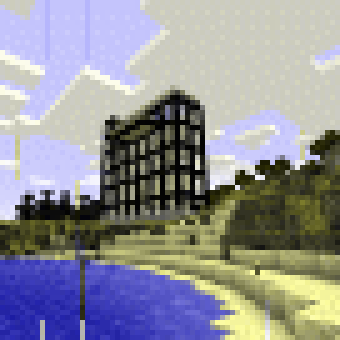
Power
WaterFeeler seems to use less power than expected and the solar panels seem to charge the battery for a few hours every morning. It's very early to tell how this will hold up, but so far it looks promising.
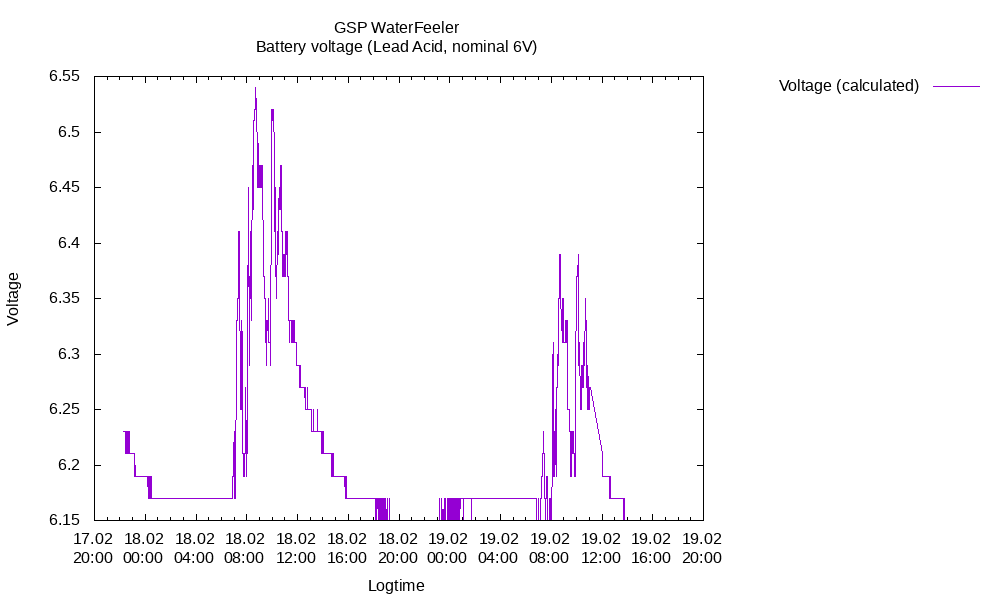
Temperature and Humidity
The DHT (digital temperature and humidity) sensors seem to work quite nicely.
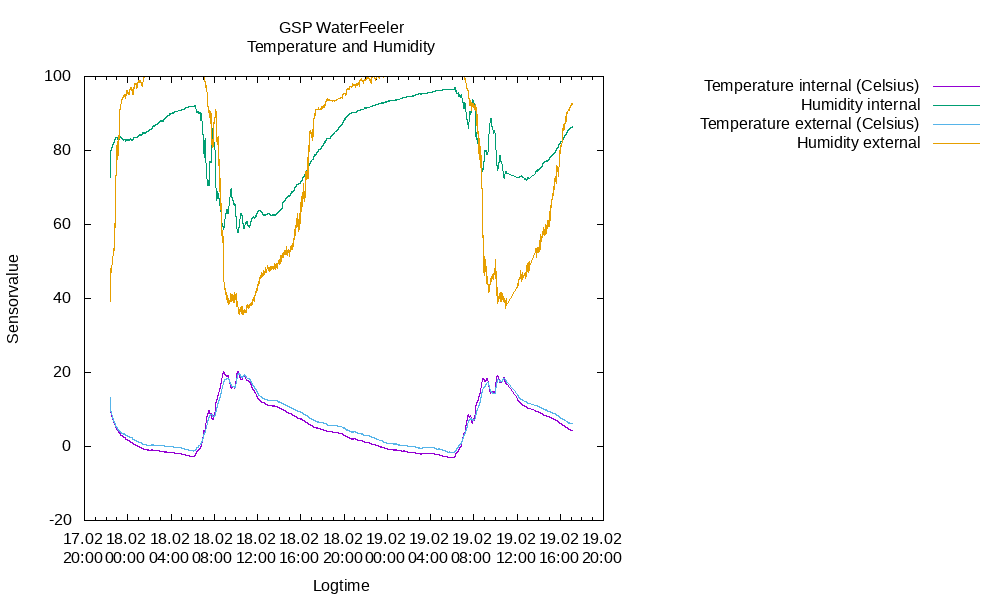
Humidity means "percent relative humidity", so how saturated the air is with water vapor. Air can hold more water when it's warmer, so if you heat up air without adding water vapor, the relative humidity falls. This is nicely demonstrated in the measured data (without rain, the amount of water vapor in the air only changes slowly), the relative humidity falls during hours of sunshine, because the air warms up and could hold more water vapor but doesn't, meaning the percentage/saturation falls.
According to our chief scientist, the very high humidity and below freezing temperatures means that, in all probability, tiny droplets of water froze in the air and fell on our WaterFeeler probe. This could be the first (indirect) measurement of precipitation since the Garden Space Program started.
Soil resistance
Our soil resistance measurement seems to work. We not only got stable data, but we also have a better idea of the range of possible values. This means, on future missions we could use a smaller range of pull down resistors, speeding up measurement and freeing some digital.
So far, we did not detect any rain.
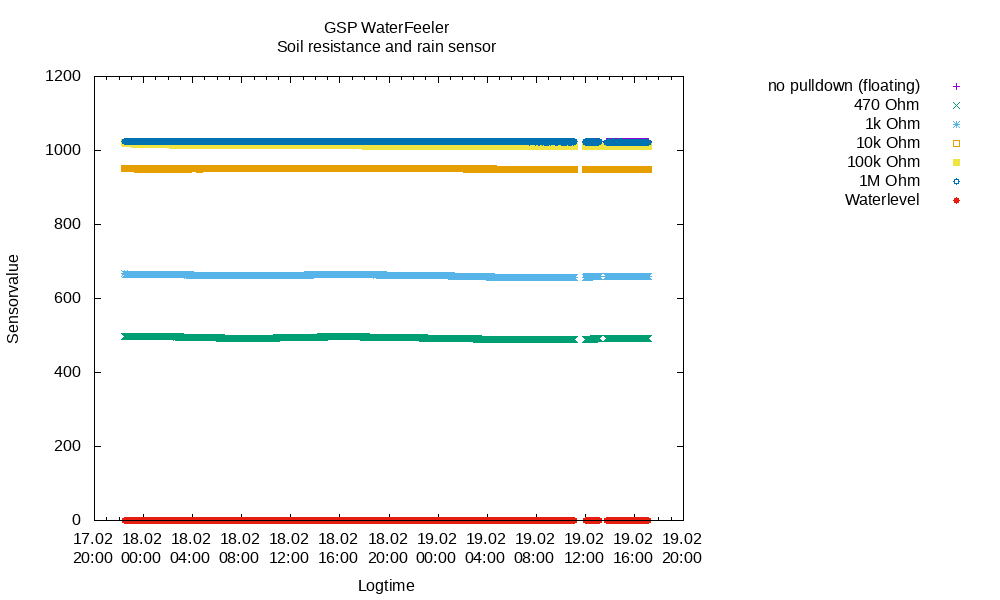
Air and soil humidity correlation
In the soil resistance plot above we can see small changes over time. So our chief scientist wondered if this would correlate with air humidity. And if it did, was it happening at the same time? Was the air humidity coming out of the soil? Or, just maybe, soil humidity was influenced by air humidity?
Let's take a closer look, using the 470Ohm and 1k pulldown resistor measurements from the soil probe and the external humidity sensor:
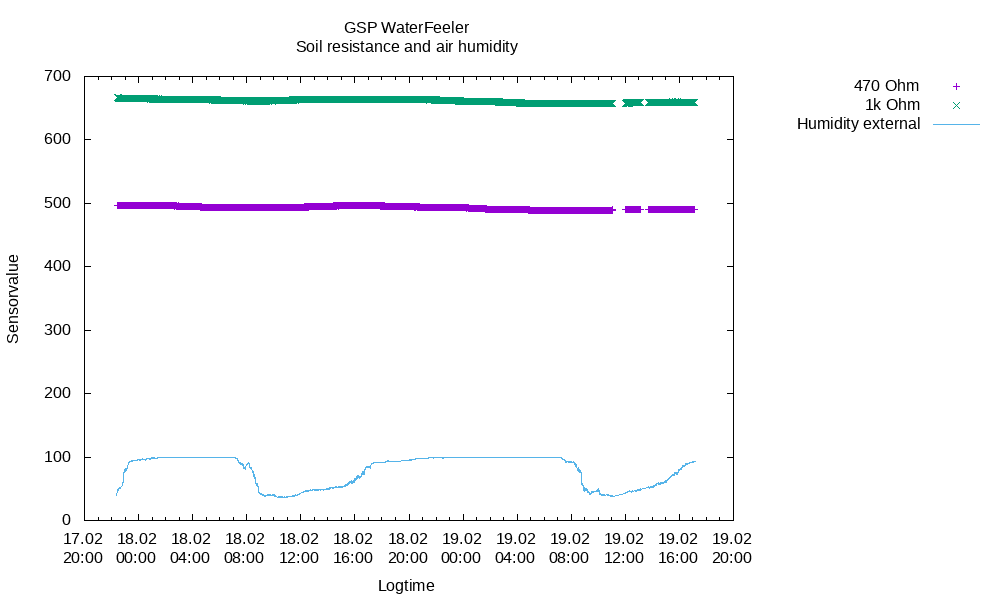
There might, just might be something there, but it's very hard to tell.
With a bit of math we can stretch the soil resistance measurement and move it down:

It's not enough data to come to any firm conclusion yet (and we just might have a "laggy" air humidity sensor), but air humidity seemd to be leading soil resistance (influenced by, among other things, amount of water in the soil).
It's a bit hard to interpret the graph, but lower soil resistance means more water in the soil. Let's flip the soil resistance around to show amount of water in the soil:

While it is too early to say fore sure, water vapor seems to condense during the night and seem into the ground. During the day, the lower air humidity and heating of the soil by the sun seems to "pull" water as vapor back into the air.
Conclusion
Except for some engineering difficulties with the software, the WaterFeeler probe seems to be on the way to fullfill many, if not most, of the mission goals. And it feels good to have built something that actually seems to work for a change.
Probe uptime: 160920001 milliseconds which is nearly 45 hours.
|


